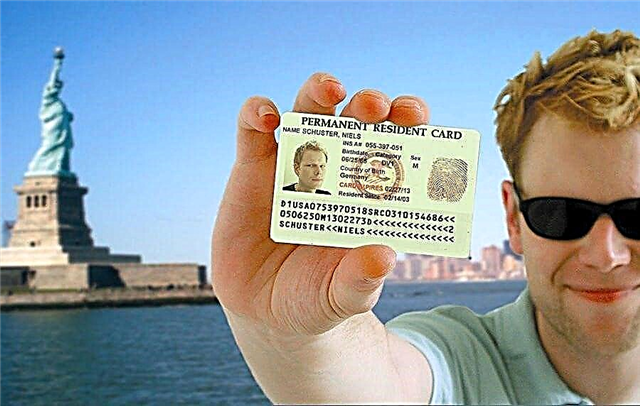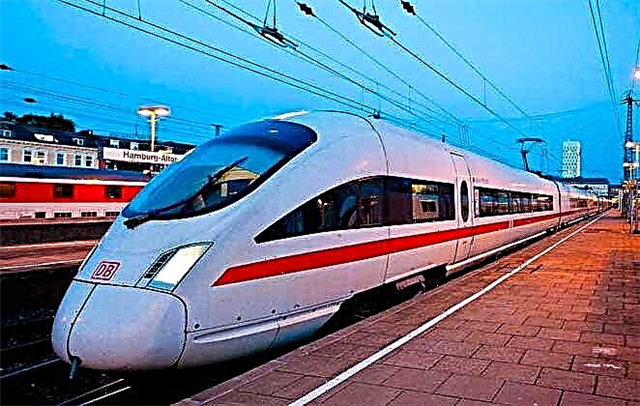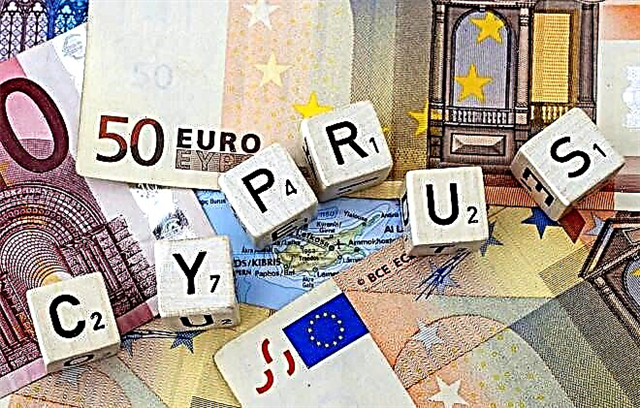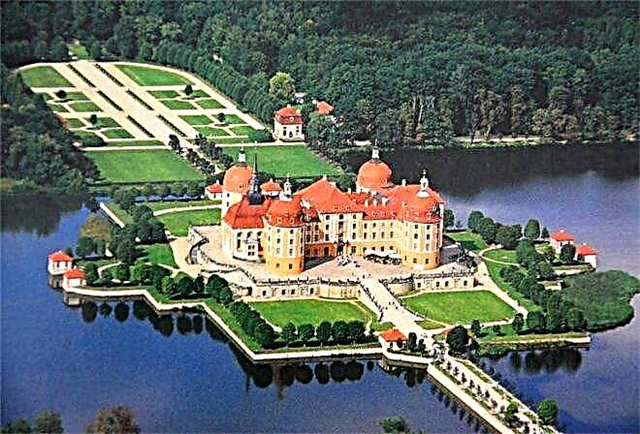The charming and romantic castle seems to have descended from the pages of a children's fairy tale. The former hunting lodge of the kings of Saxony rises in the middle of the lake in the picturesque Friedewald forest. Its interiors are no less unusual than the exterior. Treat yourself to an unforgettable adventure - a trip to the Moritzburg castle in Dresden.

The hunting lodge of the Saxon electors
In 1546, the Saxon Elector Moritz of the Wettin house built a small castle at the edge of the Friedewald forest, which was a convenient stopover during hunting trips. The massive building consisted of four low towers, united by a fortress wall, and then it did not resemble a modern luxurious palace in any way.
In the next quarter of a century, the castle was expanded, and a chapel was added to it. In 1723-1733, King Augustus the Strong ordered to rebuild the palace and surround it with reservoirs. His grandson Frederick August III laid landscaped parks around the castle and turned Moritzburg into the main hunting residence of the Saxon kings. The last private owner of the palace was Prince Ernst Heinrich of Saxony, who lived here permanently from 1933 to 1945.
When Germany surrendered during World War II, Moritzburg was requisitioned by Soviet troops and transferred to the ownership of the GDR government, which set up a Baroque museum in the castle.
The unusual landscape in which the palace complex is located is the result of skillful land reclamation. King Augustus ordered to turn several reservoirs closest to the castle into a large lake, and the palace was surrounded by water on all sides. It is connected to the coast by a road that runs along a narrow dam.
Castle architecture and landmarks
Schloss Moritzburg is a unique example of Baroque architecture. The castle acquired its modern look in 1733 after reconstruction by the architect Matthias Daniel Pöppelman.
The outline of the artificial island on which the castle is located, when viewed from above, looks like an inverted mirror image relative to the center of the building. The palace is surrounded by a wide terrace and from a distance it seems that it stands on a high pedestal.

The central part of the building is surrounded by four massive towers with spiers on domes. A wide, gentle ramp, surrounded by lawns and rows of trees, leads to the main entrance. The balustrade is decorated with stone vases, figures of hunters and cherubs. The golden walls and terracotta roofs stand out against the backdrop of the water mirror.
On the territory of the castle there is a park, which was founded on the shore of the lake during the reign of King Augustus, but the landscape around Moritzburg acquired its final appearance during the time of Frederick Augustus III. The forest around the lake has turned into a romantic English-style park with winding paths and picturesque corners.
2.5 km to the east of the castle is the Lower Big Pond with a miniature harbor, on the shore of which there is a lighthouse. The pond and port complex was built as a backdrop for theatrical military battles and royal parades. The harbor bastions are a miniature replica of the fortifications of the Dardanelles in Turkey.
The pheasant house is one of the main attractions of the park. The two-story Rococo mansion was built in 1782 and was used as the summer residence of the Saxon electors.
The alley leading to the Pheasant House is decorated with the largest Baroque fountain in Saxony. The sculptural composition depicts Venus and Cupid surrounded by swans.
Moritzburg has a special fairytale aura. In the castle and its surroundings, the shooting of popular films based on the works of the Brothers Grimm took place more than once. The most famous of them is Three Nuts for Cinderella (1973). In addition, the films Six Soldiers of Peace (1972), Cinderella (1989) and the romantic comedy The Princess Falls in Love (2004) were filmed here.
Castle interiors
The style of interior decoration of Moritzburg is dedicated to the theme of hunting. The castle has 200 rooms, and all of them are furnished not only luxuriously, but also original.
The lobby of the castle includes elements of the Renaissance style from the time of Moritz of Saxony, but the interiors of the rest of the premises are decorated in the Baroque tradition.
In 11 rooms, unique wallpaper made of genuine leather has been preserved on the walls, decorated with paintings with scenes of hunting and fishing, embossed and silver inlay. The halls are furnished with lacquered and carved furniture by the Saxon craftsmen Heinrich Grail and Niklas Moor.
The walls are decorated with collections of hunting weapons, portraits of dukes of the Wettin family, paintings by French, Italian and German masters with images of hunting scenes.
Deer antlers collection
In the castle you can see the largest collection of antlers in Europe. The collection contains unique specimens, the age of which ranges from 270 to 400 years. The largest horns reach two meters in span and weigh about 20 kg.
The oldest specimen of the collection is the horns of a fossil giant elk, which August the Strong received as a gift from the Emperor of Russia Peter I. According to experts, they are about 5000 years old.

Antlers of deer, elk and roe deer of unusual shapes are collected in a separate Hall of Monsters.
Feather room
Another attraction of the palace is the Feather Room. The tapestries on its walls, the canopy and curtains on the bed are made of peacock, guinea fowl, duck and pheasant feathers using a special technology invented by the Frenchman Le Normand. The feathers are not sewn or glued, but are connected to each other using a loom.
Porcelain collection
A unique collection of Meissen, Japanese and Chinese porcelain includes dinner sets, vases and dishes with paintings on a hunting theme. In the exhibition you can see two large Chinese vases of the 17th and 18th centuries, which are called dragoons: according to legend, Augustus the Strong exchanged them with King Frederick Wilhelm of Prussia for a regiment of dragoons.
Chapel
The palace chapel is the oldest part of the castle. It was built in 1672 by the architect Wolf Kaspar von Klengel. At first, Protestant services were held there, and only 27 years later, under Augustus the Strong, she received Catholic consecration. The walls of the chapel are decorated with early Baroque paintings and a Venetian altar from 1744. The ceiling frescoes depict the Assumption of Christ.
Excursions to Schloss Moritzburg
From March to November, the castle can be visited daily from 10.00 to 18.00.
From November to March, the museum is open from 10.00 to 17.00, Monday is a day off. Some of the exhibitions are inaccessible for viewing in winter.
The Schloss Moritzburg Museum is closed from 11 to 16 November, 24 and 31 December, 1 and 2 January.
Entrance tickets cost 8 € (607 ₽), discount tickets - 6.5 € (493 ₽), for children from 6 to 16 years old - 1 € (76 ₽).
You can purchase combination tickets that allow you to visit not only Moritzburg Castle, but also the Pheasant's House. Their price is 11 € (835 ₽), preferential - 9 € (683 ₽), children's ticket - 4 € (303 ₽).
For kids under 5 years old and guests who come to Moritzburg Castle on their birthday, admission is free.
Guided tours are held every day at 10.30, 12.00, 14.00 and 15.30. Participation in them gives the opportunity to see a porcelain exhibition, to which individual visitors are not allowed. Tour time 1 hour, cost 2 € (152 ₽). It is recommended to book tours in advance.
You can use the audio guide services in German, English or Czech. The rental price is 2 € (152 ₽), the amount of the deposit is 10 € (760 ₽).

The castle hosts interactive performances, costumed family and children's tours, children's calligraphy workshops, and art exhibitions.
The castle park is open daily from 6.00 am until dusk. You can walk in it on your own or take part in excursion tours in the picturesque surroundings.
You can find out more about excursions, tours and exhibitions on the official website of Schloss Moritzburg.
How to get to Schloss Moritzburg
The castle is located 15 km from Dresden near the town of Moritzburg at the address: Germany, Schloßberg, 01468, Moritzburg.
From Dresden to Moritzburg, you can take bus 326, which leaves from Dresden-Neustadt train station towards Radeburg every 30 minutes on weekdays and every hour on weekends. From the old part of Dresden, trams no. 3, 6 or 11 run to the train station (stop Bahnhof Neustadt).
If you want to go to Moritzburg by private car, you need to go from Dresden in the direction of Radeburg on the A13 motorway or in the direction of Dresden-Wilder Mann on the A4 motorway.
What else is worth seeing in Dresden
Dresden is famous for its architectural monuments and the largest art collections.
- The Dresden Art Gallery is one of the best art museums in the world.
- The Zwinger palace and park complex, the 13th century Dresden castle, the Cathedral, the romantic Frauenkirche church, the Opera are unique examples of the Middle Ages and the Renaissance.
- In the Albertinum you can see sculptures created in different parts of the world over 5 thousand years.
- The collection of the Museum of Porcelain, founded in 1715, includes more than 20 thousand exhibits.
- The Green Vaults Museum presents the largest collection of jewelry in Europe, in the Numismatic Office - an equally impressive collection of coins from different times and peoples.
Conclusion
Saxony is famous for its beautiful castles, but Moritzburg is distinguished among all of them with a special sophistication and romance. If you want to get to know all of its attractions, the whole day is worth taking a walk.











